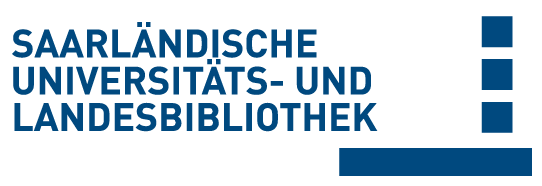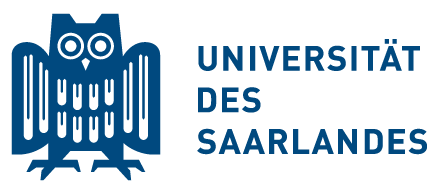Please use this identifier to cite or link to this item:
doi:10.22028/D291-26488 | Title: | Optimierung iterativer Rekonstruktionsverfahren bei unvollständigen Daten zur Anwendung in der Computerlaminographie |
| Other Titles: | Optimization of iterative reconstruction methods for non-complete data with application to computed laminography |
| Author(s): | Schorr, Christian |
| Language: | German |
| Year of Publication: | 2013 |
| SWD key words: | Computertomographie Numerische Mathematik Rekonstruktionsmethode Iterativ Unvollständigkeit |
| Free key words: | Computerlaminographie Iterative Rekonstruktion unvollständige Daten Computed laminography computed tomography iterative reconstruction non-complete data |
| DDC notations: | 510 Mathematics |
| Publikation type: | Dissertation |
| Abstract: | Die Computertomographie (CT) ist ein in Medizin und zerstörungsfreier Prüfung (ZfP) weit verbreitetes dreidimensionales bildgebendes Verfahren. Die mathematische Modellierung der CT führt zur Radontransformation, deren Inversion ein klassisches schlecht gestelltes Problem dar stellt. Neben den Rekonstruktionsalgorithmen der gefilterten Rückprojektion existieren auch iterative Verfahren, welche die Möglichkeit bieten, Vorwissen über das zu rekonstruierende Objekt zu nutzen. Besonders in Fällen, in denen nur wenige oder unvollständige Daten vorliegen, wie beispielsweise in der Computerlaminographie (CL), führt die Verwendung dieser a priori Information zu deutlich besseren Ergebnissen gegenüber herkömmlichen Rekonstruktionsverfahren. Ziel der vorliegenden Arbeit ist es, iterative Rekonstruktionsverfahren so zu optimieren, dass durch unvollständige Daten hervorgerufene Artefakte kompensiert werden und die resultierenden Rekonstruktionen eine Fehleranalyse des untersuchten Objektes im Rahmen der zerstörungsfreien Prüfung erlauben. Zu diesem Zweck werden Abtaststrategien entwickelt um Aliasing-Artefakte zu reduzieren. Dreidimensionale Volumenfilter werden in den Rekonstruktionsprozess integriert um verrauschte und artefaktbehaftete Rekonstruktionen aus wenigen Projektionsbildern zu kompensieren. Morphologische Operatoren werden eingesetzt, um effektive a priori Gewichtungsvolumen zu berechnen. Bisherige fehlerhafte a priori Verfahren werden durch angepasste Strahllängenkorrekturen berichtigt und erreichen deutliche Kontrastverbesserungen. Die besonders im Bereich der Computerlaminographie auftretenden, durch abgeschnittene Projektionen bedingte, region-of-interest-Artefakte und Kontrastschwankungen werden durch eine geometrische Strahlgewichtung kompensiert. Die erreichten Verbesserungen werden anhand von simulierten und real gemessenen Datensätzen demonstriert. Computed tomography (CT) is a three-dimensional imaging method, widely used in medicine and non-destructive testing (NDT). The mathematical model of CT leads to the Radon transform, whose inversion constitutes a classic ill-posed inverse problem. Apart from the reconstruction algorithms of filtered backprojection type, there also exist iterative methods, which allow to exploit a priori knowledge about the object. Especially if only few or limited data are available, as in computed laminography (CL), using this a priori information leads to much better results than those of standard reconstruction algorithms. The aim of the present work lies in optimizing iterative reconstruction techniques to compensate for artifacts caused by limited data thus rendering the resulting recontructions amenable to NDT defect analysis. To that end, sampling strategies are developed, reducing aliasing artifacts. Three-dimensional volume filters are integrated into the reconstruction process to correct noisy and artifact-ridden reconstruction due to few projections. Morphologic operators are used to compute effective a priori weighting volumes. Previous, faulty a priori methods are rectified by adapted ray length corrects thereby achieving significant increases in image contrast. Region-of-interest artifacts caused by truncated projections, which are common in computed laminography, are compensated for by a geometric ray weighting algorithm. Simulated and real measured data sets are used to demonstrate the achieved algorithmic improvements. |
| Link to this record: | urn:nbn:de:bsz:291-scidok-52687 hdl:20.500.11880/26544 http://dx.doi.org/10.22028/D291-26488 |
| Advisor: | Louis, Alfred K. |
| Date of oral examination: | 22-Apr-2013 |
| Date of registration: | 29-Apr-2013 |
| Faculty: | MI - Fakultät für Mathematik und Informatik |
| Department: | MI - Mathematik |
| Collections: | SciDok - Der Wissenschaftsserver der Universität des Saarlandes |
Files for this record:
| File | Description | Size | Format | |
|---|---|---|---|---|
| Dissertation_Christian_Schorr_Optimierung_iterativer_Rekonstruktionsverfahren_bei_unvollstAndigen_Daten_zur_Anwendung_in_der_Computerlaminographie.pdf | 22,55 MB | Adobe PDF | View/Open |
Items in SciDok are protected by copyright, with all rights reserved, unless otherwise indicated.

